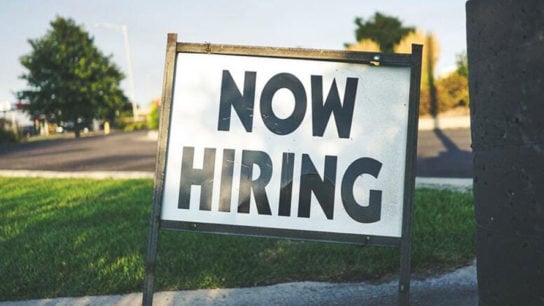If you are starting out in the corporate field, you will want to get familiar with the organisation hierarchy. Understanding the difference between key corporate roles such as the CEO and president will help to better guide you throughout your career.
Understanding different job roles in the corporate world will help familiarise you with the responsibilities requested from different people. Moreover, you will be able to better visualise your ultimate career goal.
For those on the job hunt, this will also help you know the right person to reach out to, which can greatly increase your hiring chances.
In smaller companies, the roles of Chief Executive Officer (CEO) and president are usually conducted by the same person. However, larger corporations have a more complex view of executive roles so the two do not have much in common.
Although it may seem like the same skills are needed for each, an insider or hiring professional can tell the differences between the roles and the best candidates for them. While one of them focuses on company management, the other one bridges the gap between internal and external people and processes.

President
The president of a company is usually the second in command, right under the CEO. Simply put, a president supervises the rest of the employees and deals with the day-to-day work, making sure everything runs smoothly. While the CEO makes long-term goals for the company, the president focuses on short-term ones.
The president is the connection between the employees and the CEO and is responsible for all middle management decisions regarding division heads. A president can sometimes be called a Chief Operations Officer (COO) or Chief Transformation Officer (CTO) in corporations across the globe. Their focus is entirely on the company and that is where they thrive. In other words, they do not work on tasks like securing investments and other operations where they would be the face of the company.

President Role and Responsibilities
A president’s duties may include: coaching and overseeing heads of departments, working on a company strategy and its execution, creating quarterly reports for the CEO or the board of directors, budgeting for different departments, and overseeing finances on a company level.
Presidents spend more time with their employees than a CEO and participate in the onboarding process. Because of this, they usually know how to best motivate their team members, provide them with fun break time activities, maintain the company’s values, and achieve its visions.
Presidents usually have a degree in business, or in the field their company specialises in. In terms of skills, a president needs the same leadership skills as the CEO, as well as experience in at least a few different departments in the corporation.
A great president needs to have actionable plans on how to reduce costs across the company. They can do this by finding another supplier, better software that brings more value while not driving up the price too much, or hiring a better employee for a specific job.
If they have an analytical mind, they will perform better in this role. Just as importantly, they need to be able to work with people and know how to maximise their potential. They need to have problem-solving skills, be able to work independently and in a team, and be confident in themselves and their teams. Also, they should be able to work different hours- 9-5 is no longer the standard for many now.

CEO
A CEO is usually the founder of a company and the highest-ranking executive in the organisation. They are usually the chairman of the board of directors.
They are responsible for making high-level decisions, communicating with the board of directors and the president. They oversee all business activities and create plans for the future of the company – mostly long-term goals revolving around expanding the company and creating more revenue. To achieve this, they secure investments and act as the public face of the company.

The CEO has to be able to create new opportunities for their company, predict market changes, and create plans on how to adapt to them and truly understand their stakeholders’ interests. Moreover, they need to make sure they create a long-lasting legacy for their brand.
When they do all this, the CEO should also let the company be in the main focus, and not themselves, in social media, public relations, and elsewhere.
As the holder of the highest-ranking position, the CEO reaps the most benefits when the company is doing great. On the other side, they are also the first ones to look at when the business is not doing well. The CEO is doing a good job when the company is better than the competition and revenue is growing.
A successful CEO has leadership skills that enable them to adapt to any situation. They have to make important decisions in a short amount of time and surround themselves with the best talent. No matter the size of their team, the CEO has to make sure that everyone works well with other team members. To do this, they need to make sure they hire the right people for the job.
CEOs need to be great listeners, which most introverts are. However, being a good listener is a skill you can and should learn. It is also related to being a great speaker. In other words, people that actively listen know how to get to the point quickly. They also express their view of things without talking over people or taking too much time.
Introverts also have something called “quiet confidence.” They have to present their brand in front of investors and the public, as well as build relationships with them. They do all this while knowing not to overpower the company and making sure that everyone understands that they are speaking on its behalf.
A special skill set CEOs have is the ability to build loyal relationships with employees, higher-ranking officials, people in the industry, and the media. This includes coaching, motivating, and actively listening, as well as being able to take a leap of faith and believe in the best in people – all while preparing for the worst.

Key Similarities
Both of these positions require a highly driven, ambitious jack of all trades. They have to know how to deal with pressure, work well with others, deliver results within deadlines, and more.
The CEO and president need to be proactive, innovative, look at the bigger picture, take calculated risks, have proficient communication skills, and know how to delegate. They both come into play when a huge change in the market appears, such as the ongoing pandemic. In these situations, they need to rethink their goals, strategies and shift their focus and product roadmap. They need to efficiently choose between things that need to be done immediately and those that can be postponed.
When it comes to measuring success, both of these roles have the company’s best interests in mind. However, the CEO thinks more about equity and what others think of the company, while the president works on keeping the company running on a day-to-day basis.

Key Differences
Looking at day-to-day work, the CEO will most likely focus the majority of their days on creating strategies for long-term company goals. They will also have meetings with shareholders and investors.
The president, on the other hand, will focus on financial management and will work on implementing the strategies created by the CEO in the best way possible. Simply put, the CEO focuses on wealth maximisation and strives for sustainability, while the president focuses on revenue maximisation and internal growth.
The CEO focuses on larger-scale operations, surrounding market shares, and overall shareholder value. On the other hand, the president concentrates on cutting costs, sales strategies, marketing plans, financial analysis, customer relations, and brand awareness.
It is far more important for the CEO to be a visionary, and someone who can see the larger picture, than a president.
Neal Taparia, a serial entrepreneur and the CEO of popular gaming and brain training platform Solitaired, explains, “CEOs should not be thinking about where the business will be one year from now. They need to think about where the business will be five years from now and steer it in that direction.”
The CEO should also be someone who is an amazing public speaker who has a lot of experience covering different fields, and a charismatic person in general.
The president doesn’t have to have these skills since they are not the face of the company and therefore do not have to give a lot of speeches or negotiate with high stakes, as a CEO does.
The CEO also has to know how to deal with defeat and coach their employees through tough times. This is something you can learn, but it mostly comes from experience.

With the fast-paced times we live in, there are no guarantees of getting these roles. That is why no one can accurately predict the path to take to become a CEO or president. However, hard work and investing in yourself will never go unnoticed.
Related Articles
Chief Executive Officer (CEO): 7 Key Roles and Responsibilities





